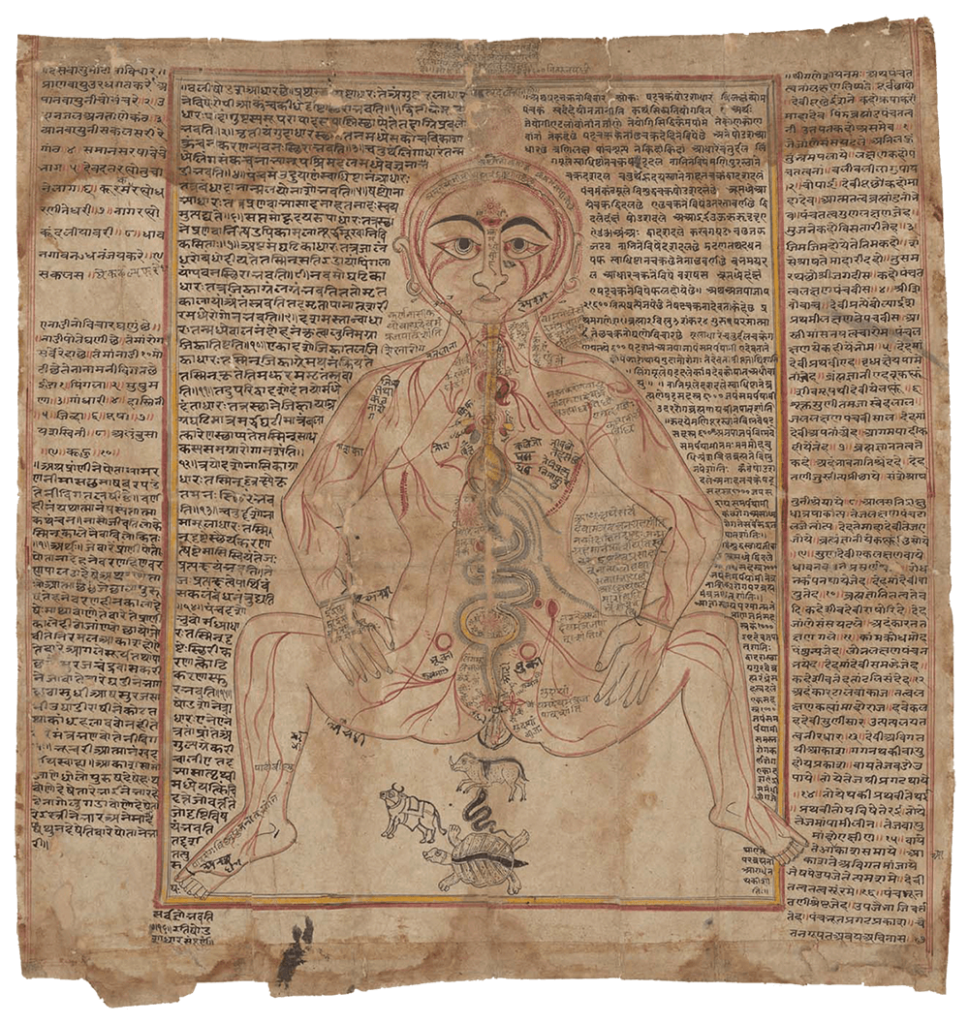Mun (Mursi) belly painting

Mun (Mursi) belly painting Mun (Mursi) belly painting Photographer: Kate Fayers-Kerr – Mun Mursi belly painting: the Mun (Mursi) use mud and clay as a technique for grounding self and society in social, political, and cosmological space and order. Fayers-Kerr has persuasively shown how Mun painting and ideas about eating earth are closely connected to […]
Nkisi power figure: “Mavungu”

Nkisi power figure: ‘Mavungu’ Held in the Pitt Rivers Museum, Oxford. 1900.39.70. Figure carved of wood and painted, studded with iron nails and implements; a ‘power figure’. [JC 27/9/2001] – Kongo nkisi: nkisi are controversially known as “nail fetishes” and famously trouble the Western concept of “animism” and African religion. The concept of the fetish […]
Umuthi wenyongo

A B Umuthi wenyongo A bottle of healing medicine manufactured by a company trading as 3Sixty Herbal Health, with a product line called “Ngoma”. “Umuthi wenyongo” is an isiZulu term for “herbal medicine of bile”. – Umuthi wenyongo: these ideas about pollution and purging of the gut are very old in southern Africa, and yet […]
The Navel Cakra (maṇipūraka) with Intestines

The Navel Cakra (maṇipūraka) with Intestines Provenance: Printed book, Bihar, undated [1903]. Anglicized Bibliographic data The Ṣaṭcakranirūpaṇacitra with the Bhāṣya and Bhāṣāṭīkā by Svāmihaṃsasvarūpa. Bihar: Trikutivilas Press Muzaffarpur. Sanskrit Title and Author in Devanagari font स्वामिहंसस्वरूपकृतम्षट्चक्रनिरूपणचित्रम् । भाष्यसमलंकृतं भाषाटीकोपेतञ्च Sanskrit Title and Author in Roman font Svāmihaṃsasvarūpakr̥tamṢaṭcakranirūpaṇacitram: bhāṣyasamalaṃkr̥taṃ bhāṣāṭīkopetañ ca Source: Wellcome Library, manuscript number, […]
Rāja Mandhata

Rāja Mandhata Nurpur, Himachal Pradesh, India c. 1690–1700. Source: Cleveland Museum of Art CC0 1.0 Universal (CC0 1.0) – The yogic body was configured in different ways by various traditions. The abdomen was thought to be the seat of fire in the body, and it could be stimulated by the practice of physical yoga postures, […]
Food’s Course of Movement in the Intestines (engraving)

Food’s Course of Movement in the Intestines (engraving) Provenance: Printed Book, page 44. Anglicized Bibliographic data The Śārṅgadhara-saṃhitā by Paṇḍit Śārṅgadharāchārya, son of Paṇḍit Dāmodara with the commentary Aḍhamalla’s Dīpikā and Kāśīrāma’s Gūḍhārtha-Dīpikā. Ed. Paṇḍitaparaśurāmaśāstri. Bombay: Pāndurang Jāwajī, Nirṇaya-Sāgar Press, 1931. Sanskrit Title and Author in Roman font śrīmatpaṇḍitadāmodarasūnu-śārṅgadharācāryaviracitā . śārṅgadharasaṃhitā . bhiṣagvarāḍhamallaviracitadīpikā-paṇḍitakāśirāmavaidyaviracita-gūḍhārthadīpikābhyāṃ ṭīkābhyāṃ saṃvalitā […]
Indian anatomical painting

Indian anatomical painting Circa eighteenth century, western India. An old-Gujarati manuscript (circa 1900?). (Wellcome MS Indic d 74. Photo Wellcome Library, London.) Source: Wellcome Collection CC BY-NC-SA 4.0 – Premodern anatomical images in India were influenced by Persian drawings on anatomy, particularly during the Mughal dynasty’s reign in north India from the sixteenth to eighteenth […]
A human anatomical figure

A human anatomical figure Drawing, Nepalese, ca. 1800 (?) Source: Wellcome Library no. 574912iWellcome Collection. Public Domain Mark. – Although India has thousands of manuscripts of premodern medical texts, only a handful contain anatomical illustrations. Text was crucially important for transmitting medical teachings. Figure 1 combines text with an illustration of the body and its […]
Towing bladder/hunting float.

Towing bladder / hunting float keeping a hunted whale floating. Photo: Bodil Begtrup, Danish Arctic Institute – This important hunting implement, when hunting seals from a kayak is, despite of the name, usually made from the stomach of a narwhal or, if this is not available, from waterproof seal skin. Its length is usually 35-50 cm. […]
Gut skin parka

Gut skin parka today stored at the National Museum of Denmark Source: Nationalmuseum, Danmark, File ID: ES-49677, Photo: Roberto Fortuna CC BY-NC-SA 4.0 – This girl’s parka is from Eastern Greenland and was acquired by the National Museum of Denmark in 1854. Survival in the Arctic requires extremely well-made clothing. The skill of producing watertight, lightweight clothing goes […]
